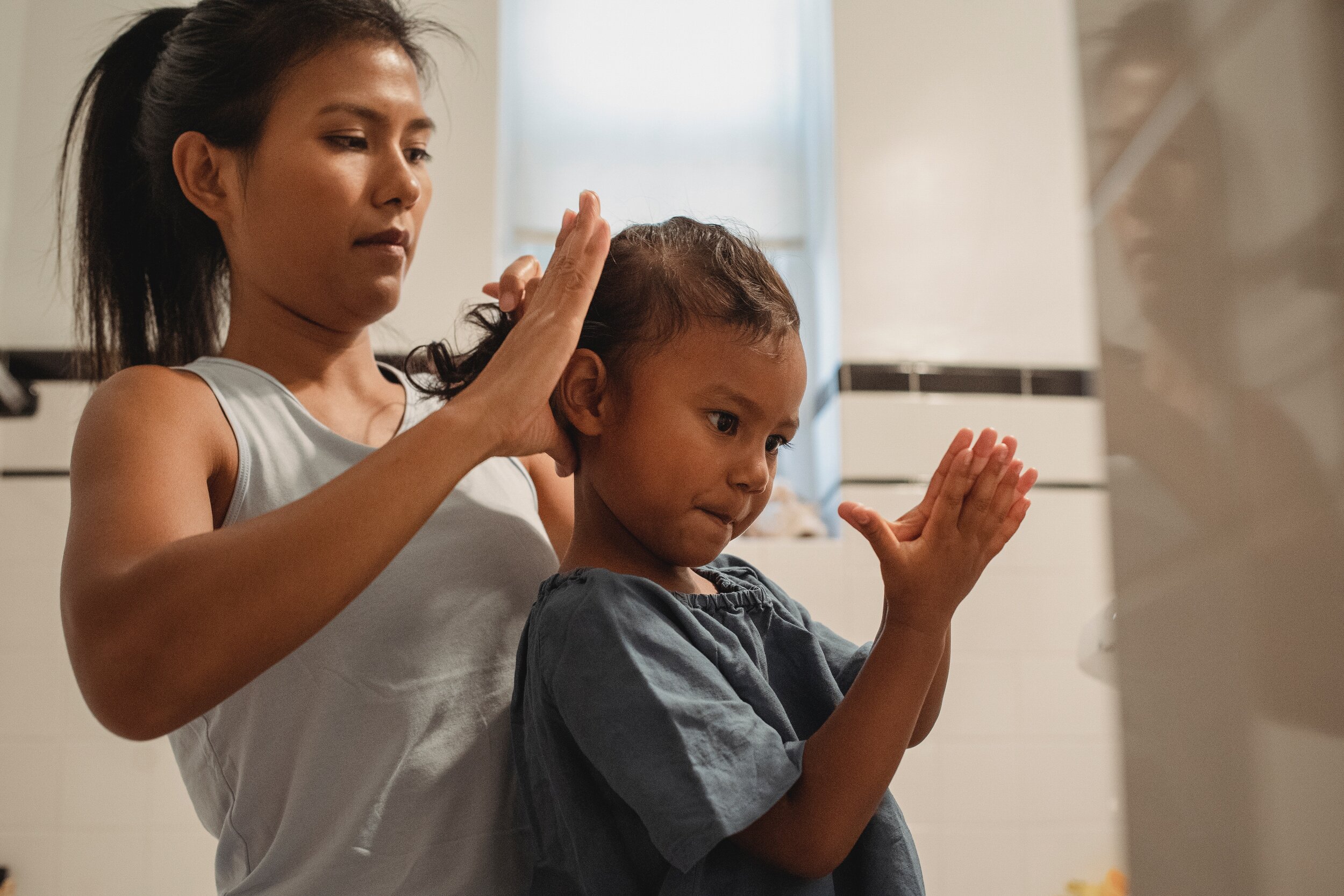Four Easy Steps to Cooperation
It is time to get ready for bed and your child has chosen that very moment to busily engage in building an elaborate structure of blocks. You can feel the resistance forming as you tell them it is time for bed. You brace for the showdown, loaded with negotiation tactics and threats (as a last resort - of course) but wonder for a moment: could it be easier? Does it have to come down to a battle of wills? Why can’t they just stop what they are doing and get ready for bed?!
It seems so simple a request, but think of it like this: when you are working hard on something, when you are deeply focussed on the details of a project or task and everything is starting to flow, how does it feel to be interrupted? Do you say, “Just a sec,” not really listening, getting lost in the task again, unaware of the time? Or perhaps you get irritated by the interruption? We have all had those moments, and for children engaged in play, reading, drawing, and any number of things they enjoy doing - it is just the same. Children, however, live more in this flow state than adults do! Transitions and change are interruptions to their focus. However trivial their activity may appear to us, it is fully engaging and enthralling to them. They are dreamy explorers and experimenters taking in the world around them, and they need plenty of time to do so. Our slowest pace is still too fast for children, they engage deeply and move slowly (think sloth time!) It is best to allow plenty of time for activities and play, and plenty of time for transitions too! The least amount of transitions the better, especially the younger the children are, but at some point, a change will have to come. Here are a few tricks to help your children meet them with greater ease, less resistance, and even a bit of joy in the process.
Join in: Meet them where they are at. Imagine a flowing river, then imagine what would happen to that river if a wall suddenly appeared. There would be a big splash! Water everywhere as it found the current blocked! As parents, trying to change the direction of flow, it is better to be like the bank of the river. River banks travel with the river, gently curving towards a new direction. We do this by joining in their energy. Are they excited about what they are doing? Then we are excited about it too. We share appreciation and momentum. “Oh wow! That is so awesome! Let’s add another block then race to get our shoes on.”
Get Physical: action first. Use your body to model what you are wanting. If it is time to clean up, start tidying before you even say anything- handing them items to put in their place. Is it time to head to bed? Let your body gently guide them by staying close, with a hand on the back - moving while they continue talking. Children follow gesture and action, their bodies wanting to automatically join in. A young child’s nature is imitative. They are not yet in the world of words and thoughts, so actions truly DO speak louder than words.
Signal and Repeat: Songs, verses, and sounds help children know when it is time to transition. When used with repetition and rhythm, they signal the coming change and exactly what happens next. For instance, if you sing a clean-up song a few minutes before clean-up, every time, then children will know that it is time to put everything away. They stop resisting because it is a known and consistent event. If you have a daily rhythm, then that song will not only signal what is needed to do now, but they will also know what comes next and start moving towards it. (After clean-up, we wash our hands for meal time -- with enough repetition, they will put toys away and move to the bathroom for handwashing with little to no oversight on your part, because it is what always comes next!)
Envision: All of the above is made most possible with a little bit of manifesting magic. What you want to have happen, envision - see it as if it IS already happening. The more we believe our children will come along, without conflict, then they will too! Imagine your children getting ready without a word from you. Imagine them joyfulling following you into the next activity - brushing teeth, getting dressed, etc. Imagine the actual bodily sensation of ease, lightness and joy around it all. Then, when it comes time to meet it in truth, lean into that vibration you imagined. Call it up and your children will resonate. Of course, there will be testing, especially if you are implementing something new, but most of our success comes from our own belief that we can, in fact, succeed. If we can stay joyful and hold the vision of what we want to experience, in time, your children will feel its call and join right in.
